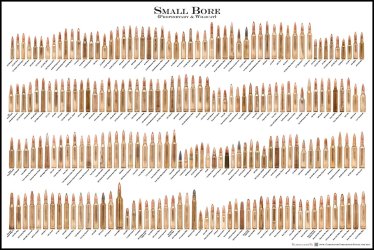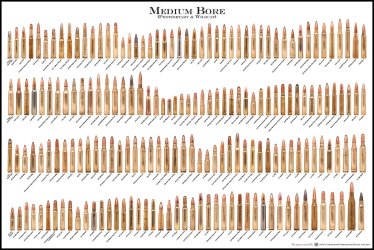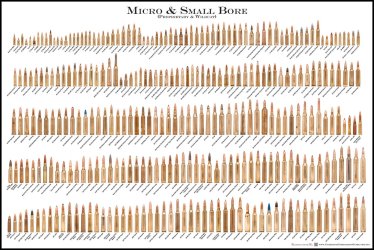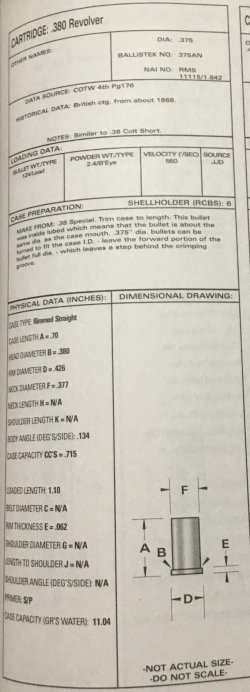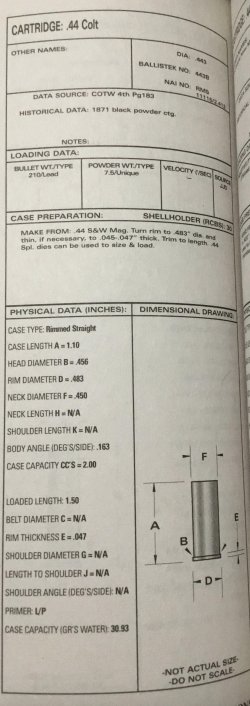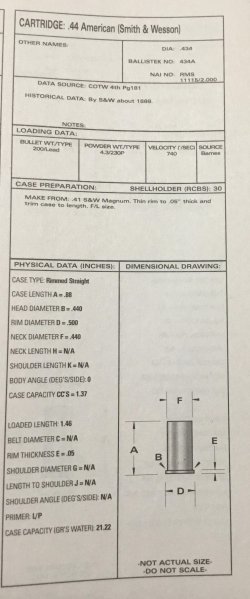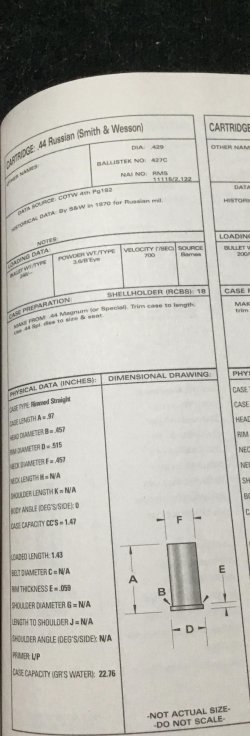Yes — what you're describing does ring bells, especially in the context of
Winchester experimental cartridges and 19th-century naming conventions, where
nominal caliber designations didn't always reflect
actual bore or groove diameters.
Here's a breakdown of the
.42 Stetson, along with clarification of its .44-caliber connection:
The
.42 Stetson is a relatively obscure, experimental cartridge developed by or for
Winchester, likely in the
1870s–1880s, as part of efforts to create a repeating rifle with improved range, accuracy, and stopping power. It was designed to work with a
repeating rifle action—possibly in early lever-action designs like the Model 1876 or experimental arms.
The
Stetson name refers to
William Stetson, a Winchester designer and engineer involved in developing proprietary cartridges.
Your memory is accurate: the
.42 Stetson is
technically a .44 caliber by modern standards, but here's what likely happened:
- .42 refers to bore diameter (measured across the lands)
- .44 refers to groove diameter (measured across the grooves)
This difference is common in 19th-century cartridges. For example:
- The .38 Special uses a .357-inch bullet
The .44 Russian, .44 S&W American, and others use bullets of .429–.431 inches
The
.42 Stetson may have used a
.429–.431 diameter bullet, making it a
.44-caliber projectile, but had a bore (across the lands) of around
.42 inches, hence the name.
This naming method wasn't standardized, and manufacturers often labeled cartridges for
marketing or design purposes, not strict measurement. The
.42 Stetson likely followed that logic.
If you're trying to match or understand the actual bullet or bore size:
- Groove diameter = ~.44 caliber → bullet size
- Bore (land) diameter = ~.42 → name origin
It's not widely documented, but references show up in:
Old
Winchester experimental cartridge lists
The
Winchester Cartridge Board displays
Some
Herter's or Barnes books on obsolete and wildcat cartridges
| Feature | Value |
|---|
| Name | .42 Stetson |
| True Caliber | ~.44 groove diameter |
| Bore Diameter | ~.42 (across the lands) |
| Bullet Diameter | Likely ~.429–.431 inches |
| Era | Late 19th century |
| Purpose | Experimental rifle cartridge (likely repeater-compatible) |
| Designer | William Stetson (Winchester) |
If anyone sees an issue with this post please let us know. There is a Pasadena Tx gun show today May 31-June 1, might head over their and check it out.
Vintage And Antique Guns, Ammo, Knives And Other Collectable Outdoor And Historical Items.

www.ammoandguncollector.com
Here is a revolver that was auctioned off on invaluable. Expensive Sold for over $20K.
Documented Early Colt Model 1871-1872 Open Top Single Action Revolver Factory Recorded in Extremely Rare .42 Stetson Caliber with Factory Letter An estimated 7,000 Colt "Open Top" revolvers were manufactured in 1872-73. They are the ancestors of the Colt percussion and conversion revolvers and the direct predecessors of the famous Colt Single Action Army revolvers. Many of these rare revolvers saw very hard use or have been destroyed. Offered here is an early three digit serial numbered example which is listed by the factory records as being in .42 Stetson caliber. The accompanying factory letter lists this Open Top with a barrel chambered in ".42 for Stetson cartridge" when it was shipped to Spies, Kissam & Co., New York City as part of a 20 gun shipment on July 18, 1872. This letter is also reprinted and discussed in R. Bruce McDowell's "A Study of Colt Conversions and Other Percussion Revolvers" on page 280. In 1871, George R. Stetson received a patent for his cartridge that became known as the .42 Stetson because the bullet diameter was .42 inches. Stetson cartridge was essentially an improved version of the .44 Henry flat rimfire. The .44 caliber and .42 caliber can use the same rifled barrel bore because the .42 Stetson has a groove-to-groove dimension of .44 inches. As explained by McDowell, Colt was simultaneously producing the Open Top and Richards-Mason revolvers and required proper terminology to identify the two revolvers in their records. The result was that the Richards-Mason revolver was listed in .44 caliber and the Open Top was listed in .42 caliber. The top of the barrel has the one-line New York address, and the frame has the correct early production "COLTS/PATENT" marking seen on roughly the first 1,000 revolvers. The cylinder has the naval battle scene. Matching full serial numbers are found on the frame, barrel, both grip straps, and cylinder. Fitted with the short Navy type grip. Includes consignor research. Manufacturer: Colt Model: 1871 1872 BBL: 7 1/2 inch round Stock: Gauge: 42 Stetson Finish: blue/casehardened/silver Grips: walnut Serial Number: 127 Class: Antique Condition: Exceptionally fine. The barrel retains 60% bright original high polish blue finish and the cylinder retains 25% of original blue finish with the balance a mottled brown-gray patina. 30% of original case colors remain on the hammer and frame. There are some patches of deep pitting. 90% of the cylinder scene remains. The grip straps retain 85% original silver plating. There are a few patches of deep pitting. The grip is very fine with a small chip missing near the bottom (right side), some scattered minor pressure dents and scratches and retaining most of the original varnish. Mechanically excellent.
Ill bet classicguns in Houston Tx has the manuals on this and might even have the revolver.






